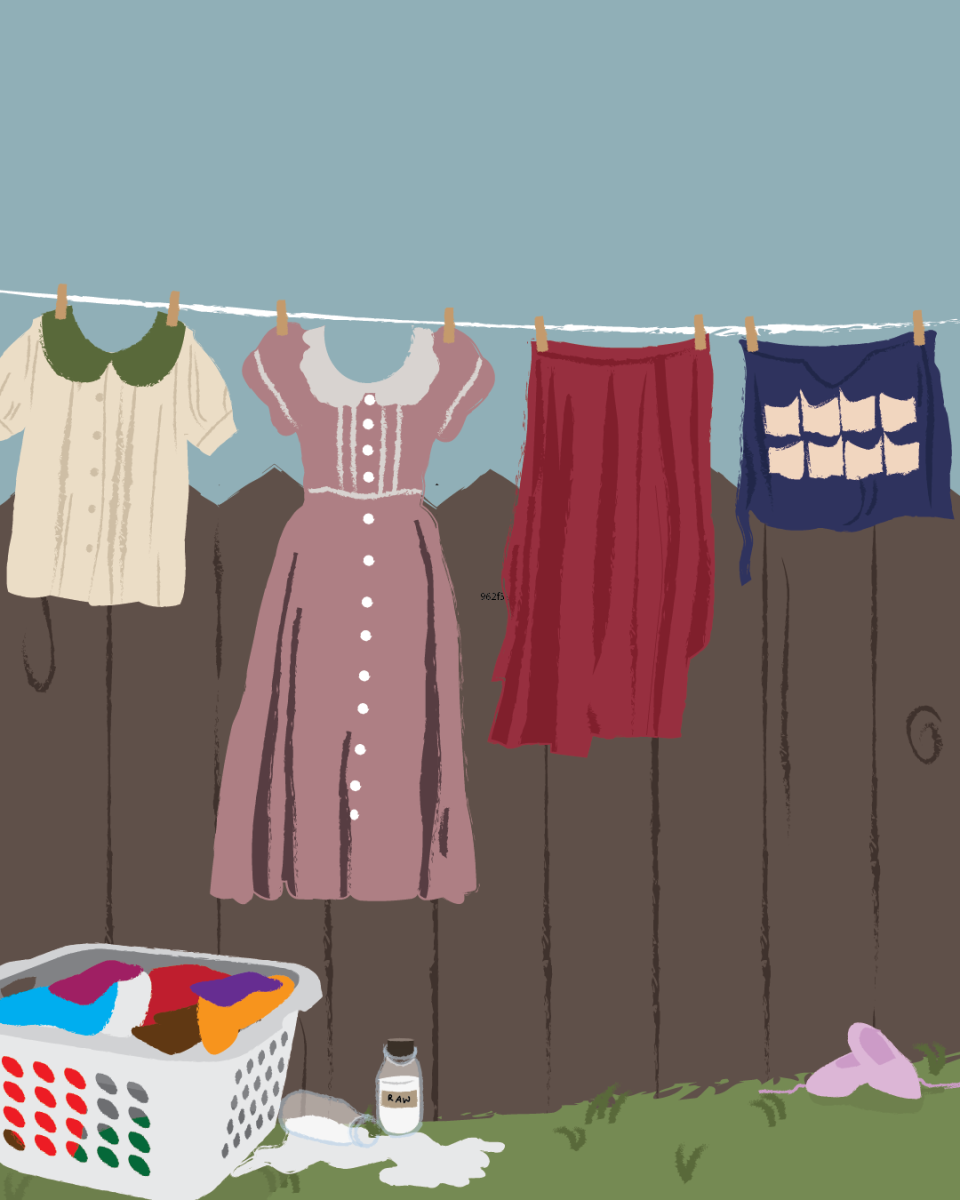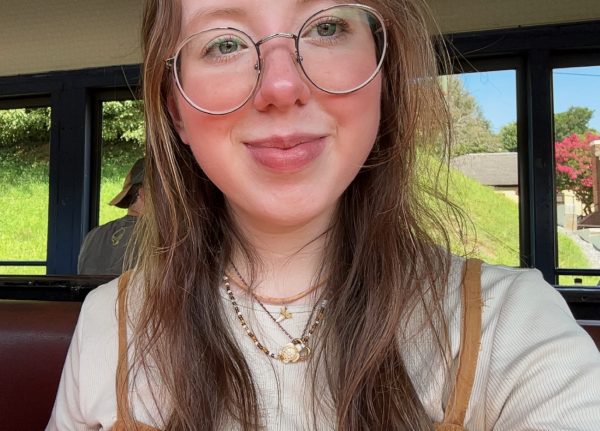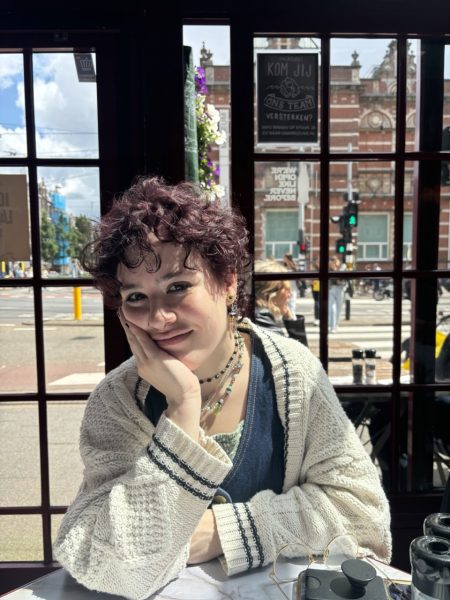It’s not outlandish to say the current presidential administration of the United States has affected more than just stock market numbers, price hikes due to tariffs and relationships with other countries.
President Donald Trump’s administration, just by the nature of its existence, has started to cause a complete shift in U.S. society and culture. A shift that began long before he stepped foot in office this past January.
The increase in romanticization of “traditional” values, housing styles, marriage ideals and fashion is a direct result of an increase in conservative ways of thinking, political polarization and partisan belief systems, which has been on the rise in recent years.
More specifically, the concept and discussion around being a “tradwife” has grown even more in popularity following the slow descent into widespread support of Trump and his administrative policies — a concerning, and maybe even disturbing development within recent months.
A tradwife, as defined by Merriam Webster, is a “married woman who embraces traditional gender roles and values.” Typically applied to women, the “ultraconservative” slang term is widely applied to those who take on roles as homemakers and child carers and often follow Christian beliefs.
The discussion regarding tradwife culture began to increase in popularity around last year, where Hannah Neeleman, better known as “Ballerina Farm,” unintentionally fanned a flame of controversy across social media platforms, namely TikTok.
Neeleman’s story blew up due to the influence of an interview published by The Sunday Times in 2024, which seemed to paint her in a more tragic, sad light than what can be gathered from her TikTok page.
Neeleman’s wish to be a ballerina touched a lot of hearts but fostered a lot of debate. “My goal was New York City,” she said in an interview with The Times. “And I was going to be a ballerina. I was a good ballerina.”
But her dreams had to be “sacrificed” when she gave birth to the first of her eight children. This is just one example of likely many unshared stories; tales of women being encouraged, maybe even forced, to give up their dreams in pursuit of something more “womanly.”
But some women make that choice for themselves. So, what makes the difference, exactly? The answer is politics.
According to Pew Research Center, in 2020, only 22% of U.S. voters aged 18-23 approved of Trump’s handling of the presidency. However, AtlasIntel reports that this number has risen, with those aged 18-29 having a 41.8% approval rate of Trump’s current presidency. The approval percentages mostly continue to rise as the ages ascend.
The Vanderbilt Unity Index is a marker of U.S. unity, a score measured on a 100-point scale, and made up of survey data regarding “strong presidential disapproval, political and ideological extremism, social trust, political and social unrest and measurements of Congressional polarization.”
Near the end of 2020, the VUI captured the lowest score ever recorded at 40.16. This strikingly low number is not unfounded.
This increase in political extremism was indicated with the events of January 6, 2021, but extends far beyond White House riots or Trump’s encouragement of injecting hand sanitizer directly into your veins as a treatment for COVID-19.
It was indicated years ago with the rise in aesthetic trends like cottagecore, old money, quiet luxury, clean girl and the increase in the destruction of colorful interior design in favor of sad, beige house renovations.
The one thread all of these aesthetics share is some sort of emphasis on past traditional lifestyles, and a splash of romanticization of U.S. homestead living in some old country house. Of course, while excluding the roots of these styles in outdated mindsets of racism, misogyny and other varied forms of exclusion.
In retrospect, surges in these styles of fashion have always been indicative of an increasingly conservative mindset and recessions.
Factors such as the lipstick, heel and hemline indexes have pointed to the development of recessive economies and societies for centuries.
All three of these indexes are reflective of the direction in which financial markets are heading.
Fashion has had its hands in politics long before the existence of social media, before popularized encouragement of old ideals and the steps back feminism has taken in recent years in favor of the fruition of internal and external misogyny.
During the Great Depression in the 1930s, women transitioned to ideals of social conservatism — adopting longer hemlines and romanticizing suburban lifestyles. Traditional family values began to seep back into U.S. society after the Roaring ‘20s.
The same thing happened after the recession of 2008. Following the fun colors and bedazzled bags of the early 2000s, women left their Juicy tracksuits, low-rise True Religion jeans and Uggs behind in favor of more minimalistic, cheaper styles.
The gap between classes grew during the time period from 2007 to 2009, and caused consumer behavior to shift. The average consumer came to the conclusion that they could, and needed to, survive on less. Even luxury consumers, such as celebrities, switched towards cutting back on mass consumerism, instead limiting themselves to buying selective pieces.
Celebrities shifted towards a more boho style, where handmade clothing became more of a staple of the end of the decade. There was also a return to the “structured silhouettes” of the 1940s and ‘80s, with cinched waists and shoulder pads growing in popularity.
Fashion has been used to assert political ideologies and demonstrate social hierarchies during many points throughout history. Personal style has always been indicative of developing new ideals, personal freedoms and equality.
However, when fashion subcultures and personal expression become commodified in pursuit of some larger, right-wing political movement, all meaning is washed away.
The most important aspect of humanity is its attachment to the desire of authentic expression. Following trends is hardly harmful, but when those trends are directly attributed to a widespread conservative or right-party, feminism and other social justice movements become threatened.
Traditional aesthetics of “quiet luxury,” or “old money” are exclusionary, whether purposefully or unintentionally. With their roots in the romanticization of the past, the ideologies held during times of old America rise to the surface as a result.
Characterized by obsessions with upper-class styles reminiscent of Jackie Kennedy and Princess Diana, vintage brands and makeup are adopted in pursuit of looking more put together, often paired with the concept of looking like a “clean girl.”
The other, arguably less noticeable, connection of these various aesthetics is their roots in classism, wealth inequality, elitism and even biases surrounding racial identities. These styles became popular between the 1920s and 1960s. During a time when racism, segregation and movements for Civil Rights were prominent, the differences between groups became imposed upon the style as a result.
While the connection may not be obvious to all, it cannot be denied. Just as the connections now cannot be, either.
Every regression currently taking place in the fashion world points to yet another economic and social recession. Like during the Great Depression or the financial downturns of 2008, the U.S. is taking a turn once again for the world of conservatism — so get used to those lengthened hemlines, because they might be here for a while.



